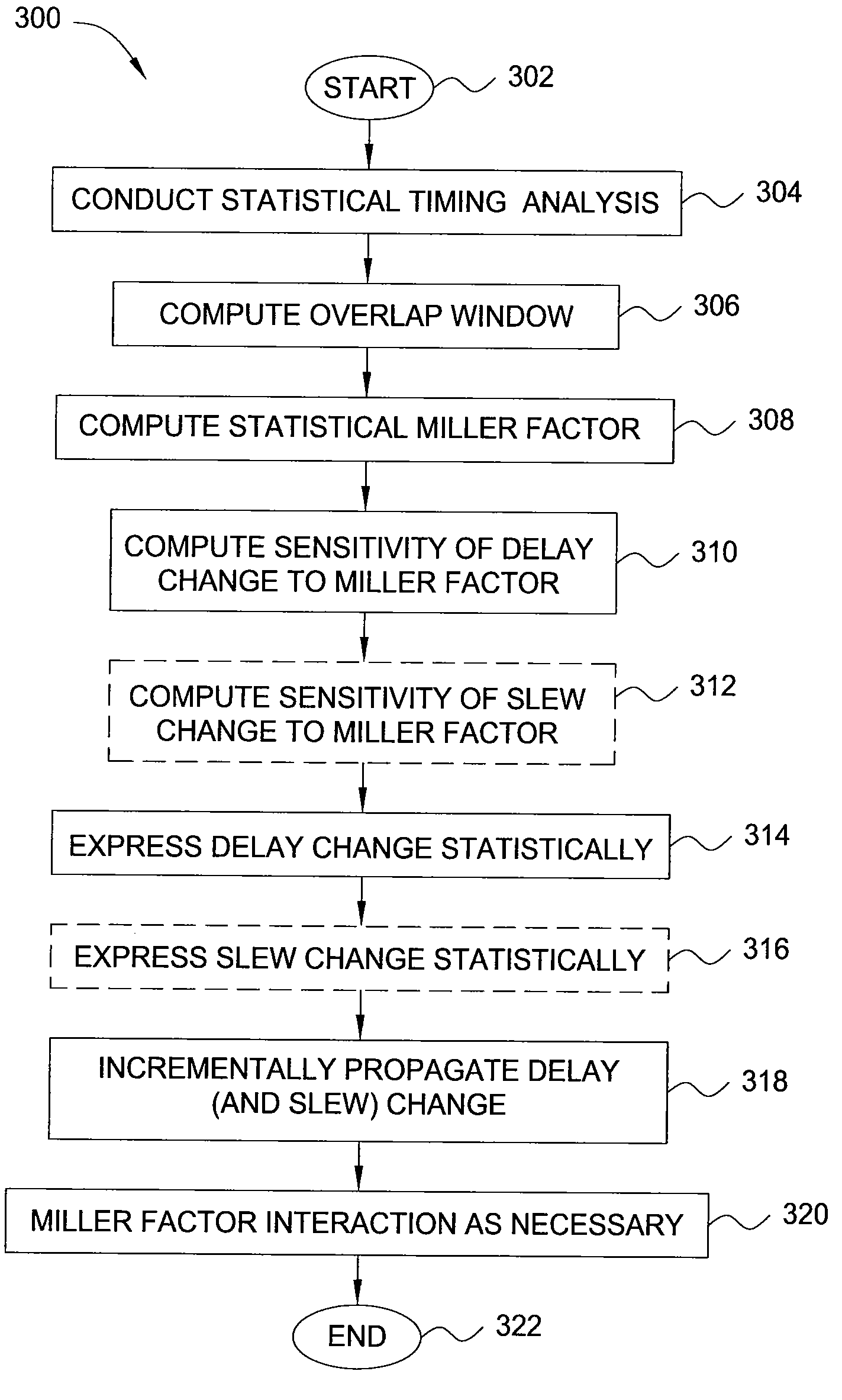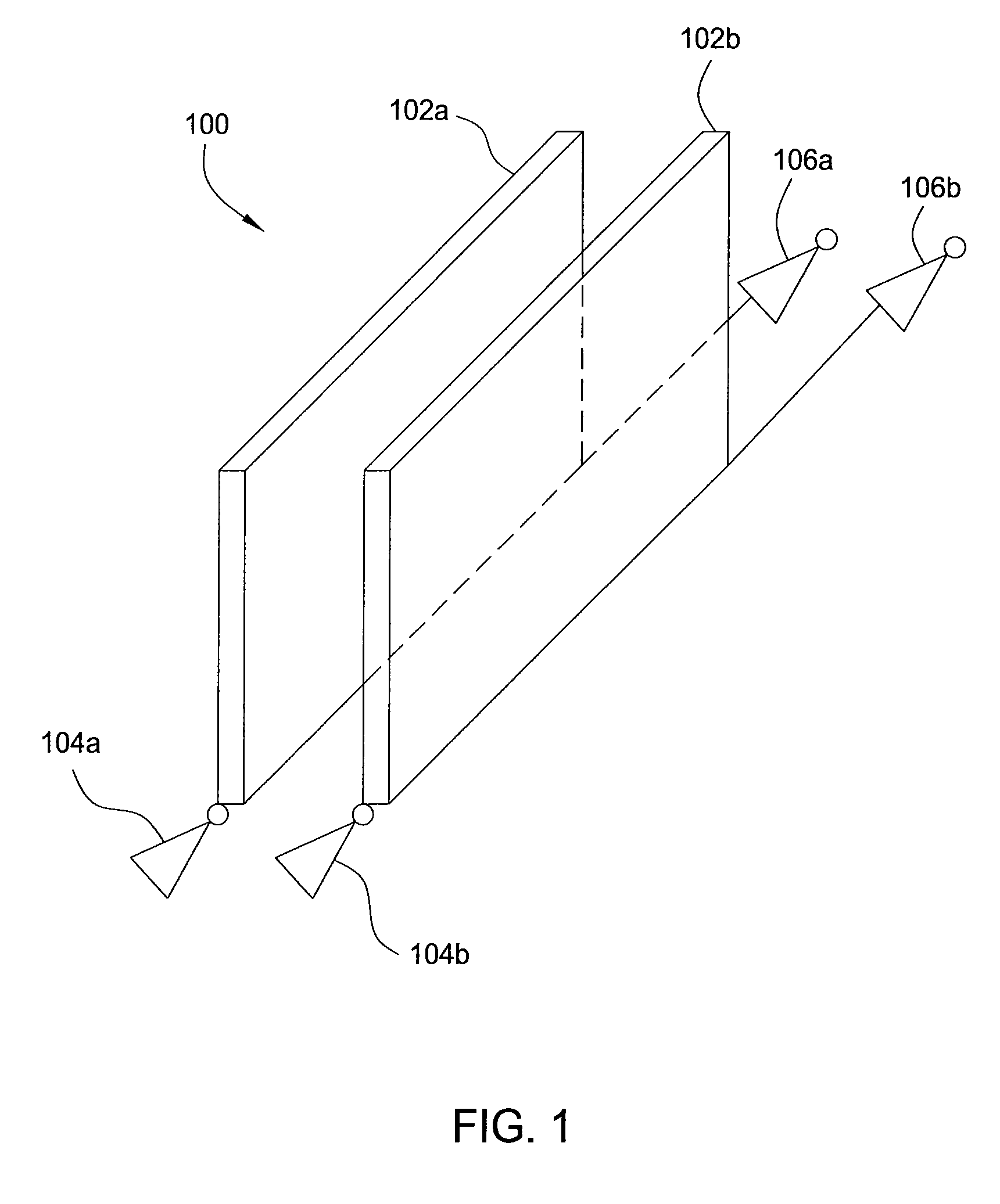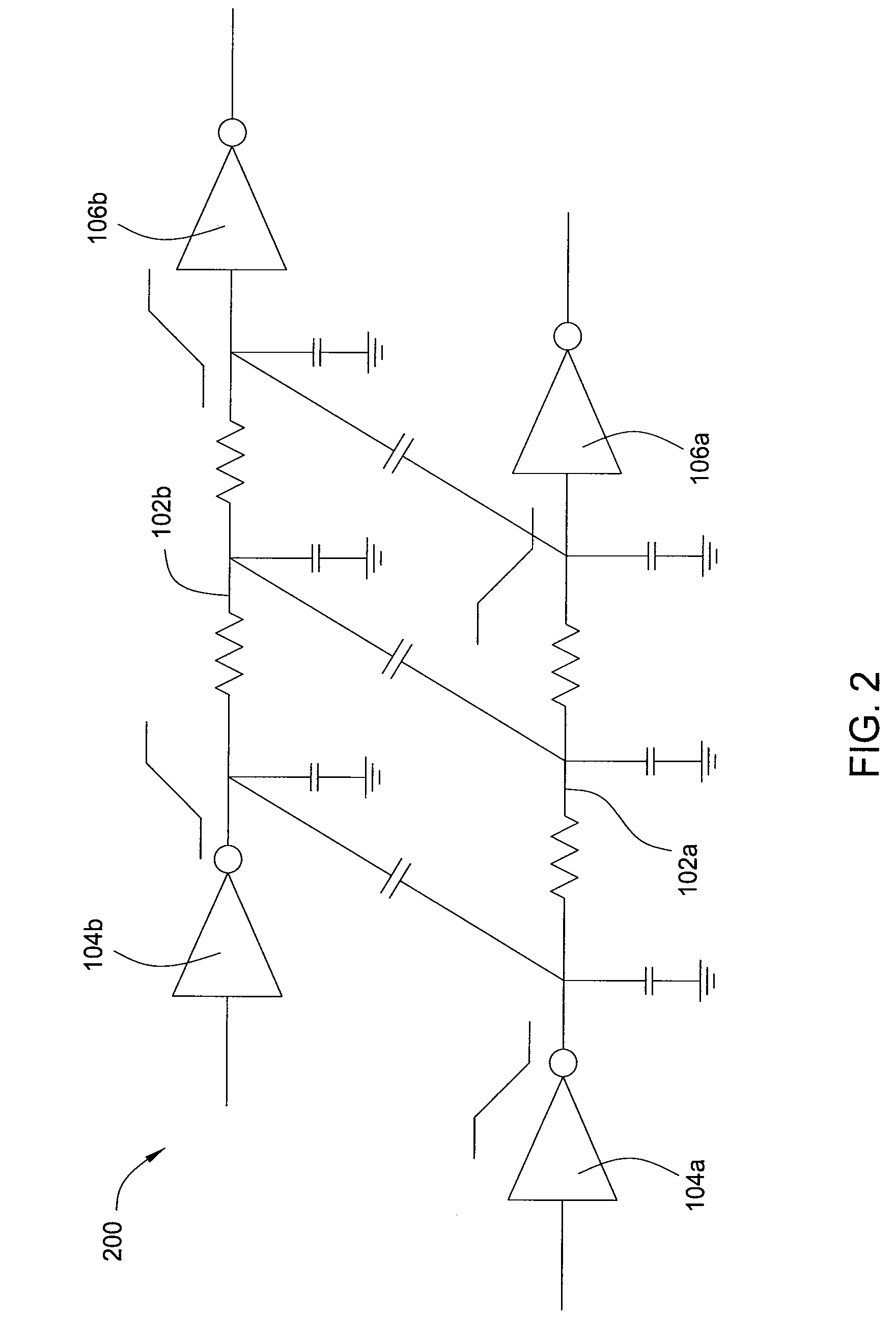Method and apparatus for static timing analysis in the presence of a coupling event and process variation
a technology of coupling event and static timing, applied in the field of design automation, can solve the problems of signal slowdown, gate and wire delay and slew changes, and the conventional static timing analysis does not take into account the effect of coupling noise on timing, so as to reduce pessimism and increase the accuracy of performing statistical timing analysis
- Summary
- Abstract
- Description
- Claims
- Application Information
AI Technical Summary
Benefits of technology
Problems solved by technology
Method used
Image
Examples
Embodiment Construction
[0024]The present invention and the various features and advantageous details thereof are explained with reference to the non-limiting embodiments that are illustrated in the accompanying drawings and detailed in the following description. It should be noted that the features illustrated in the drawings are not necessarily drawn to scale. Descriptions of well-known components and processing techniques are omitted so as to not unnecessarily obscure the present invention in detail.
[0025]FIG. 3 is a flowchart illustrating one embodiment of a method 300 for static timing analysis of an integrated circuit design, according to the present invention. The method 300 may be implemented to analyze both combinational and sequential integrated circuit designs. As will be described in further detail below, the method 300 accurately and efficiently accounts for both process variations and coupling events during static timing analysis, while also taking into account the complex correlations induce...
PUM
 Login to View More
Login to View More Abstract
Description
Claims
Application Information
 Login to View More
Login to View More - R&D
- Intellectual Property
- Life Sciences
- Materials
- Tech Scout
- Unparalleled Data Quality
- Higher Quality Content
- 60% Fewer Hallucinations
Browse by: Latest US Patents, China's latest patents, Technical Efficacy Thesaurus, Application Domain, Technology Topic, Popular Technical Reports.
© 2025 PatSnap. All rights reserved.Legal|Privacy policy|Modern Slavery Act Transparency Statement|Sitemap|About US| Contact US: help@patsnap.com



